From lupine and aster to balsamroot and alpine daisies, Washington is home to a variety of wildflowers. Hiking trails pop with color come spring and summer, and while some well-known destinations experience a surge of crowds during this time, there are plenty of other Washington wildflower hikes that see fewer visitors and offer a peaceful escape.
Best Time to see Wildflowers in Washington
Wildflower season in Washington occurs from mid-March through August, with different flowers blooming at different times. April and May are solid months for Washington wildflower hikes at lower elevations, while June through August you can explore higher-elevation trails.
Keep an eye on trail reports on AllTrails or the Washington Trails Association (WTA) so you can get a sense of bloom times and current wildflowers. These resources will also provide important details like trail conditions and potential closures. If you want some help identifying wildflowers, check out WTA’s handy guide to peak bloom months.
Travel Tip: All trails have the potential to get busy on weekends, so plan to arrive early in the day or travel mid-week when possible.
Washington Wildflower Hikes
Looking for alternatives to some of the most popular wildflower hikes in Washington? Check out these spots recommended by locals, land managers, and destinations.
Cowiche Canyon Conservancy, Yakima Valley
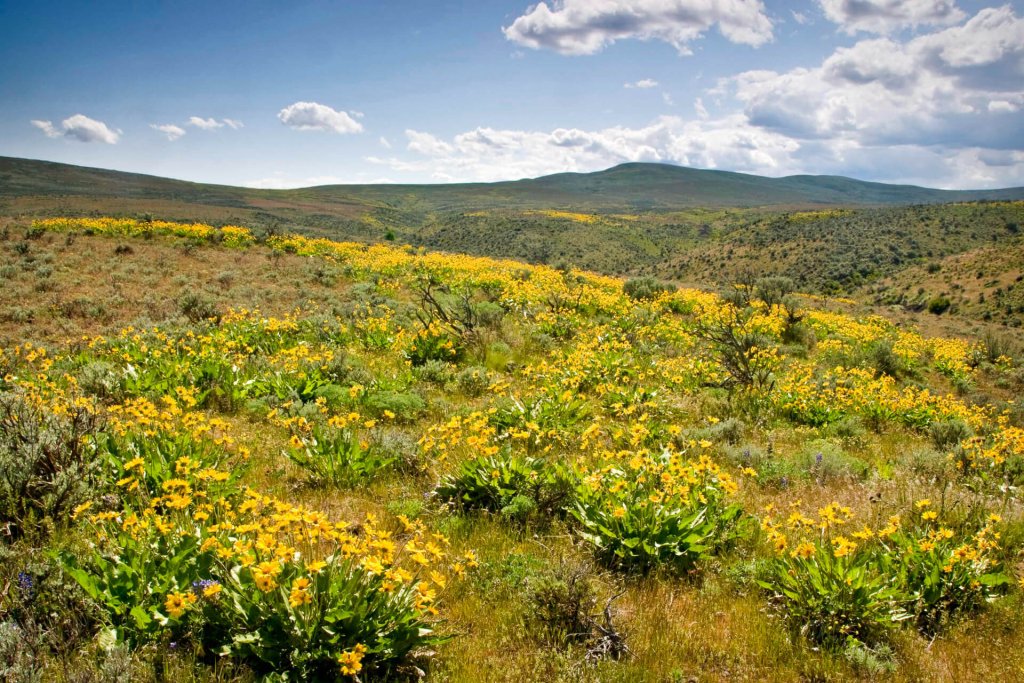
The Cowiche Canyon Conservancy Trails in Yakima are home to grasslands, meadows, and more. For spectacular seasonal blooms, the conservancy’s executive director Celisa Hopkins recommends the aptly named Wildflower Trail. At under one mile but with an uphill grade, the route also connects to other trails in the Snow Mountain Ranch area. There’s also the South Uplands Loop, where lithosols grow with a number of other wildflowers like fragile onion, balsamroot, and lupine. Flowers bloom between late February to late May depending on moisture and heat levels.
High Drive Parkway Trail and Rocks of Sharon, Spokane
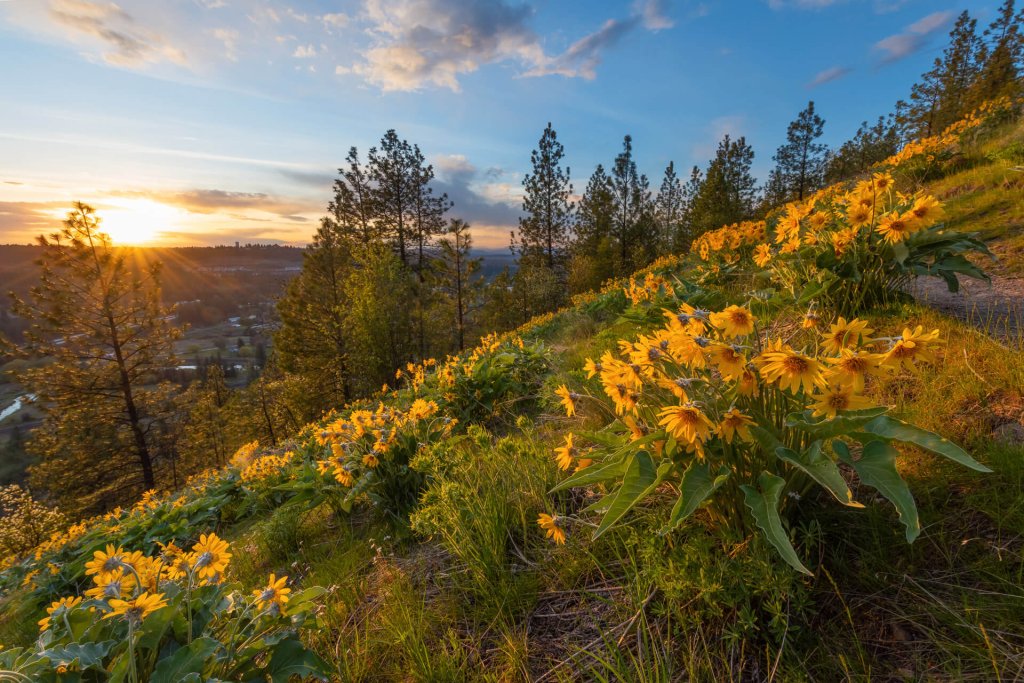
For those looking for a longer or more challenging trail near Spokane, consider the High Drive Parkway Trail, a 10-mile hike abundant with arrowleaf balsamroot from April to May. This is a great option if you don’t have a hiking pass since parking is free. Another great option is Rocks of Sharon, which is popular among climbers. You’ll see Big Rock and other granitic monoliths along the way.
Hurricane Hill via Hurricane Ridge, Olympic National Park
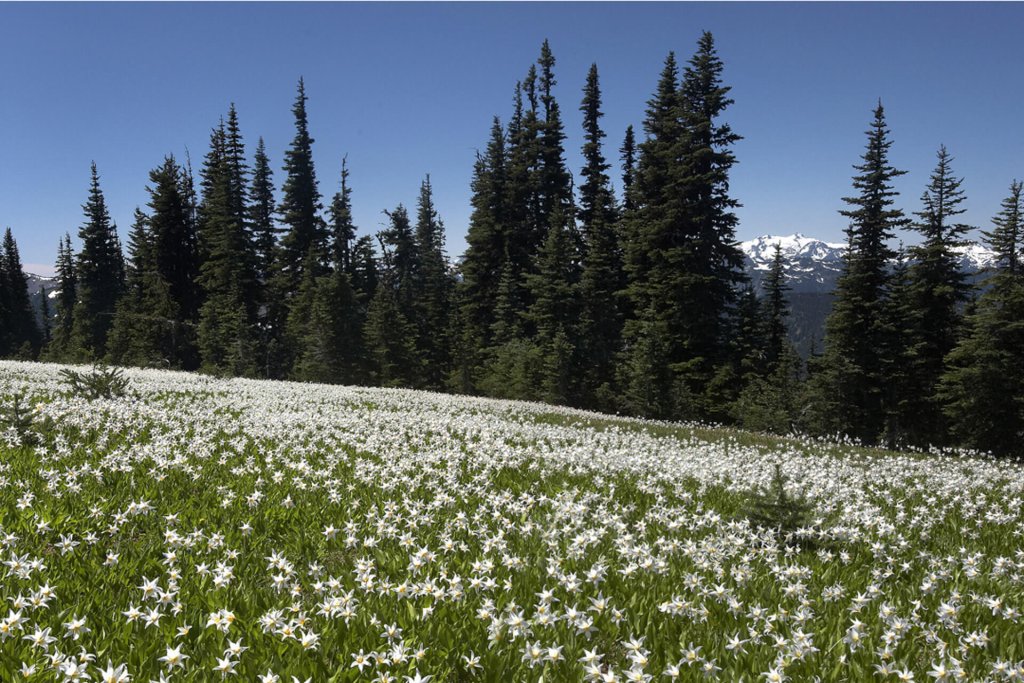
Looking for a short wildflower hike option in Olympic National Park? In contrast to more popular trails in the area like Upper Big Creek Loop Trail, the Olympic Peninsula Visitor Bureau recommends Hurricane Hill via Hurricane Ridge, a three-mile trail with 700 feet of elevation gain offering panoramic views. In addition to wildflowers like lupine or avalanche lilies, you may encounter deer and marmot on the trail. A National Park pass is required.
Also See: Less-Visited Hikes in Olympic National Park
Lyle Cherry Orchard, Columbia River Gorge
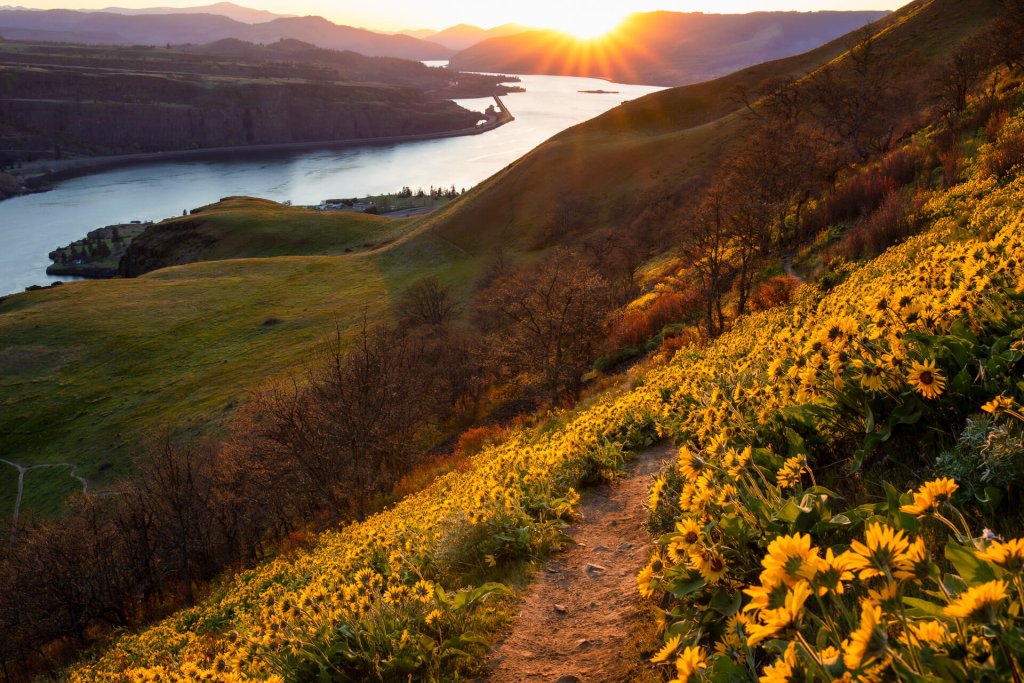
Rather than head to well-known spots like Dog Mountain, consider other stellar wildflower hikes on the Washington side of the Columbia River Gorge. Friends of the Gorge recommend the five-mile Lyle Cherry Orchard Trail for birding and hiking. You have the best chance of seeing wildflowers like lupines and daisies from early March through May, with peak blooms in mid-to-late April. Views of the Gorge are fantastic year-round. Along the way, you’ll also find interpretive trail signs. Note: The Washington Trail Association recommends wearing long pants and staying on the trail, as poison oak may be present on the edges of the trail.
The Weldon Wagon Road trail also boasts meadows of balsamroot and lupine wildflowers in April and May. Take in views of the White Salmon Valley as you make your ascent.
Travel Tip: To protect Washington’s outdoor spaces, some hikes like Dog Mountain have implemented a permit system. A Dog Mountain Trail System Vehicle Reservation is required for weekend visits from mid-April through mid-June, as well as Memorial Day. A permit does not guarantee a parking space at the trailhead.
Also See: Columbia River Gorge to Coast Road Trip
Coldwater Lake, Butte Camp, and Ape Canyon, Mount St. Helens area
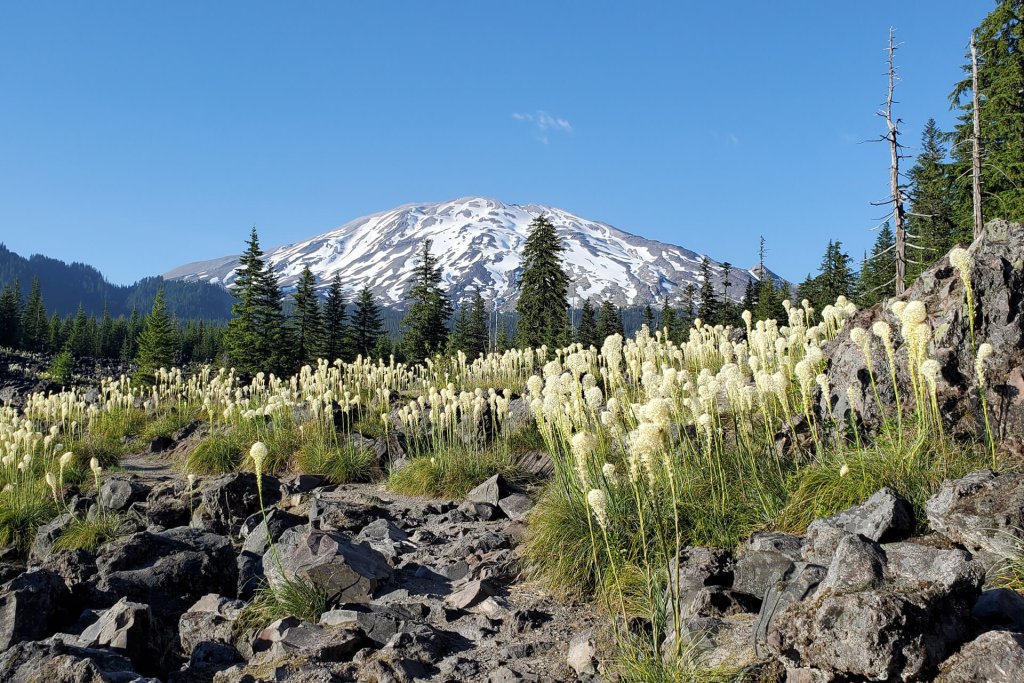
Coldwater Lake via Lakes Trail is an 8.7-mile out-and-back trail that’s fairly moderate and dog-friendly. Here, you’ll likely find scarlet paintbrush, yellow bee plant, and forget-me-nots, as well as colorful butterflies attracted by the blooms. Bring water, plenty of sunscreen, and a hat since most of this trail is exposed. To visit, you’ll need to pay $5/vehicle/day or have a valid pass like Northwest Forest Pass or Interagency Pass.
Columbia Gorge Tourism Alliance also recommends Butte Camp Trail, an 8-mile, out-and-back hike with breathtaking wildflower meadows that climbs gently through pine forests and old lava flowers. The route also provides excellent views of Mount St. Helens. Another option is Ape Canyon, an 11-mile roundtrip hike that offers views of Mount Adams and Mount Rainier as you gain elevation. You can spot blooms like queen’s cup, lupine, tiger lilies, and goat’s beard on the connecting Loowit Trail.
Lake Ann, Cle Elum area
A quieter alternative to nearby Lake Ingalls, the Lake Ann Trail offers switchbacks and meadows and is a more challenging hike that clocks in at just over eight miles roundtrip. Along the trail, you’ll find scarlet paintbrush, columbine, and lupine. This is also a great option for fall when the larches change to gold. A Northwest Forest Pass is required.
Berkeley Park and Reflection Lakes, Mount Rainier National Park
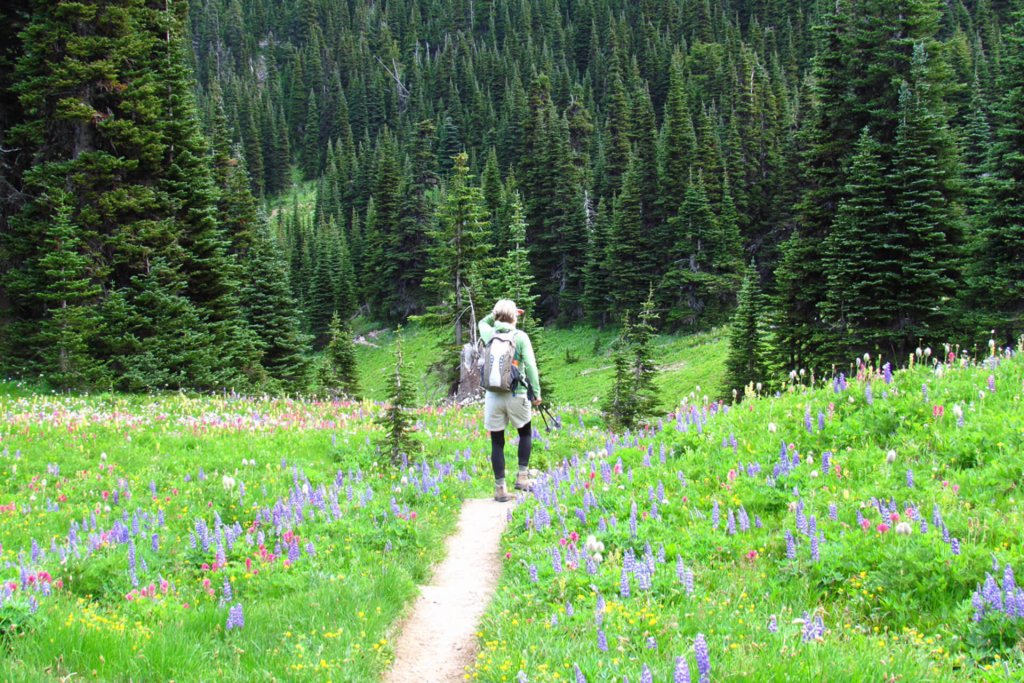
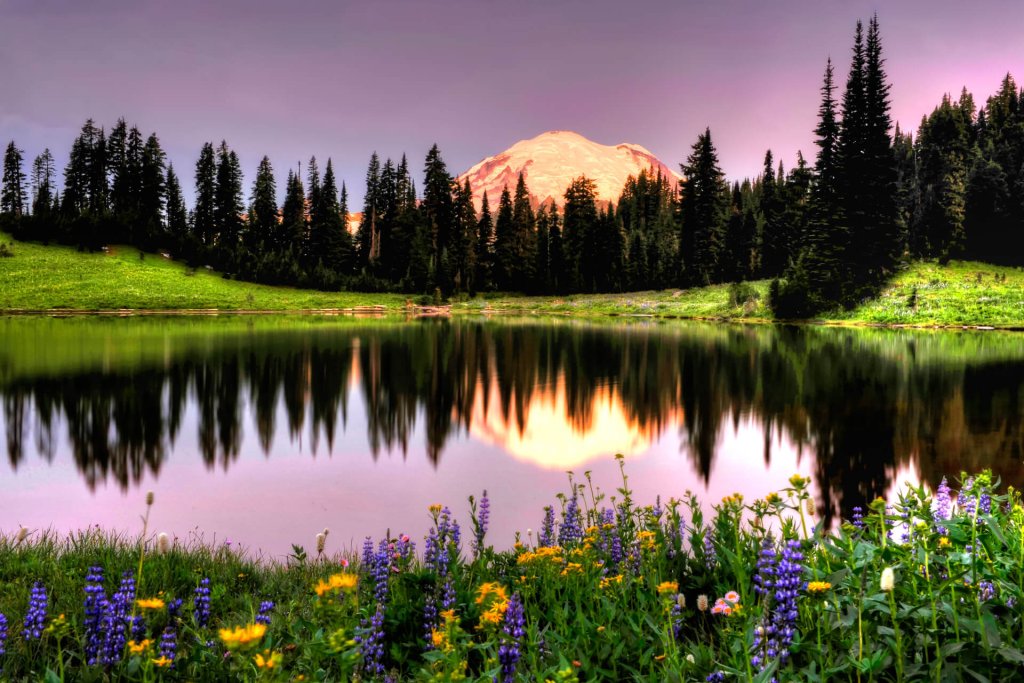
If you’re looking for an alternative to Skyline and other popular trails at Mount Rainier National Park, Meilee Anderson with Visit Rainier recommends Reflection Lakes, which offers stunning views of Mount Rainier over the water. In the summer, you can find wildflowers like rosy spirea, fireweed, and lupine along the lake on this 2.75-mile loop. Come fall, the area transitions to warm hues and vibrant foliage.
If you want to see flowers, creeks, marmots, and maybe even mountain goats, Anderson also recommends the 7.7-mile roundtrip hike to Berkeley Park. It’s less heavily visited and will take you along parts of Sourdough Ridge Trail and Wonderland Trail. A National Park Pass is required for both hikes.
Recreate Responsibly
Wildflower hikes in Washington are popular for good reason, and each year brings more visitors who hope to experience the state’s colorful blooms and scenic landscapes. Help protect these outdoor spaces by following some simple guidelines:
- Always stay on the marked trail to avoid trampling wildflowers and other plants.
- Don’t pick the flowers or remove vegetation.
- Leave no trace by packing out all your trash.
- If you’re bringing dogs on a dog-friendly trail, please keep them on a leash so they stay on the path.
About the Author
Aleenah Ansari is a Seattle-based writer covering travel, entrepreneurship, mental health and wellness, and representation in media for Insider, The Seattle Times, Byrdie, and more. You can usually find her searching for murals in Seattle and beyond, reading a book by a BIPOC author, and planning her next trip to New York. Learn more at aleenahansari.com.
Featured Image: Berkeley Park | Photo Credit: Janelle Walker
